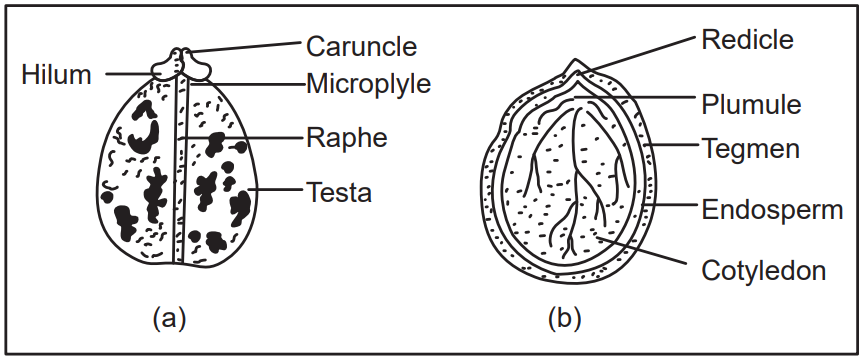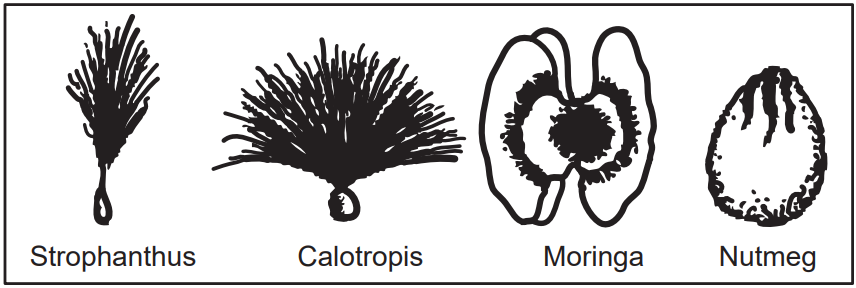Morphology of Seeds: The seed is a fertilized ovule and is a characteristic of Phanerogams. The parenchymatous body of the ovule known as nucellus contains embryo-sac in which fertilization of pollen cells takes place giving rise to the embryo. The seeds are characterized by the presence of three parts known as an embryo, endosperm, and seed coat.
Seed coat
Table of Contents
It is the outermost layer of the seeds providing necessary protection to the embryo lying inside the seed. In the case of dicotyledonous seeds normally, it is hard and may contain two layers; the outermost thick layer is known as testa while the inner one which is thin is known as tegumen. In monocotyledonous seeds, it is thin or even may be fused with the wall of the fruit.
Embryo
It is the main part of the seed. It consists of an axis having apical meristem for plumule, radicle the origin or root and adhered to it is one or two cotyledons, differentiating the plants as monocot or dicot.

Endosperm
It is the nutritive tissue nourishing the embryo. It may be present or may not be present in the seed. Depending upon the presence or absence the seeds are classified as under:
- Endospermic or albuminous seeds.
- Nonendospermic or exalbuminous seeds.
- Perispermic seeds.
1. Endospermic or albuminous seeds: In this seed, the part of the endosperm remains even up to the germination of the seed and is partly absorbed by the embryo. Therefore, seeds are known as endospermic seeds as in colchicum, isabgol, linseed, nux vomica, strophanthus, wheat, and rice.
2. Nonendospermic or exalbuminous seeds: During the development of these seeds, the endosperm is fully absorbed by embryo and endosperm, and is not represented in the seeds; hence, they are known as nonendospermic, e.g. sunflower, tamarind, cotton, and soyabean.
3. Perispermic seeds: Herein the nucleus develops to such an extent that it forms a big storage tissue and seeds are found to contain an embryo, endosperm, perisperm, and seed coat; e.g. pepper, cardamom, nutmeg, guinea grains.
Seeds are characterized by the following descriptive terms:
- Hilum: This is the point of attachment of seed to its stalk.
- Micropyle: It is the minute opening of the tubular structure, wherefrom water is provided for the germination of seeds.
- Raphe: Raphe is described as a longitudinal marking of the adherent stalk of an anatropous ovule.
- Funicle: It is the stalk of the ovule attaching it to the placenta.
- Chalza: This is the basal portion of the ovule where the stalk is attached.
Special features of seeds
Sometimes, apart from the regular growth of seeds, additional growth is visible in the form of appendages which attribute to their special features. They are described as:
- Aril: Succulent growth from hilum covering the entire seeds as in nutmeg (mace) and yew seeds.
- Arillode: Outgrowth originating from micropyle and covering the seeds as in cardamom.
- Arista (awn): Stiff bristle-like appendage with many flowering glumes of grasses and found in strophanthus.
- Caruncle: A warty outgrowth from micropyle, i.e. castor, croton, viola moringa.
- Hairs: Gossypium and calotropis are examples of this type of outgrowth.

Functions of Seeds
Seed performs the following functions:
- Reproduction, i.e. it germinates into a new plant.
- Spread of the species.
- Species and varieties do not come to an end by the successive formation of seeds by the plant. Thus seeds are ‘means of perennation’.
Make sure you also check our other amazing Article on : Morphology of Flowers
